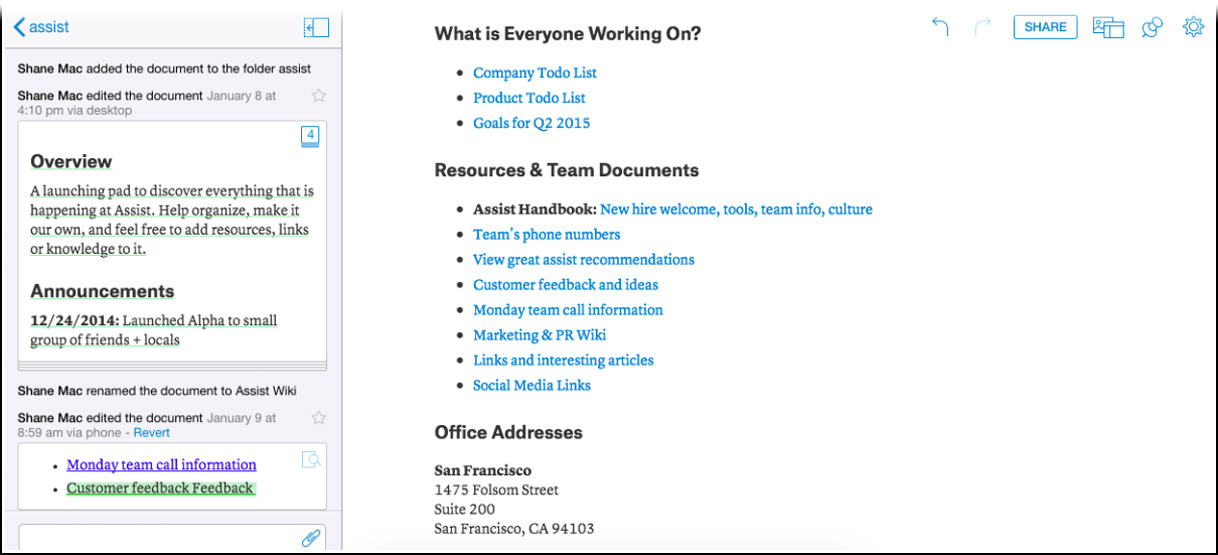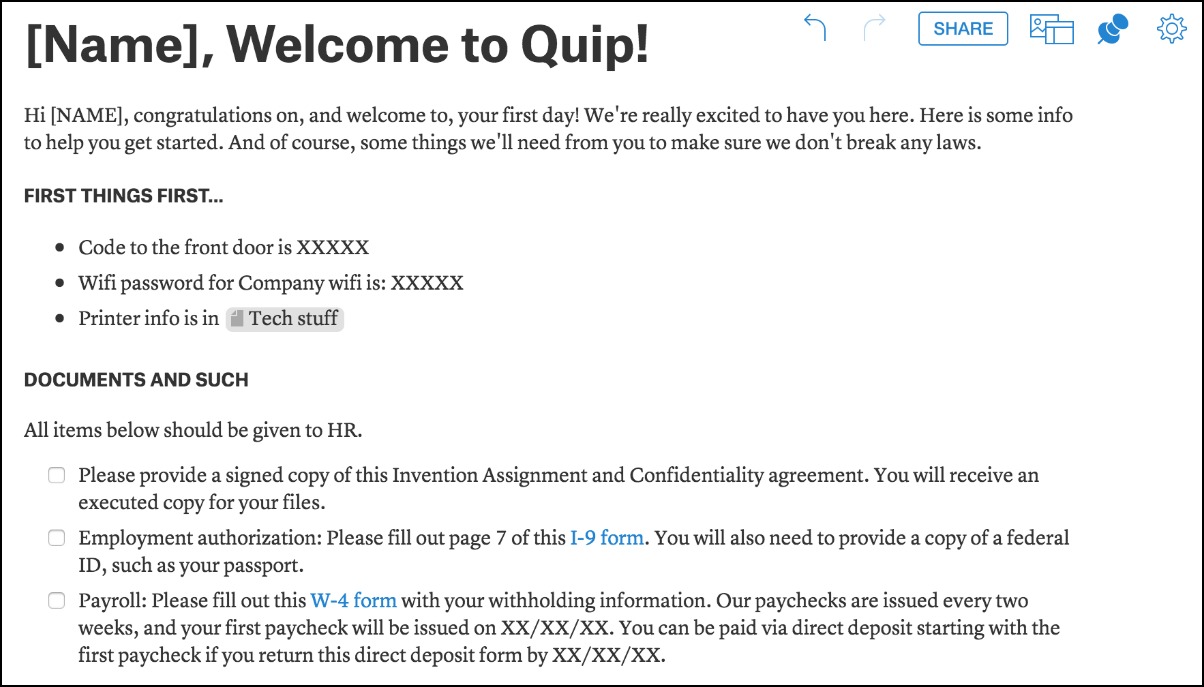3 Tips for Onboarding New Hires Using Quip

Onboarding is tricky. How do you bring in someone brand new and help them efficiently understand all the history, context, and processes of your organization?
In the end, onboarding is a lesson in archeology: digging out the history and context of your team so that someone else can study it and learn from it. Once new hires get through the standard paperwork, you have to share documentation about the vision, goals, and history of the company, give them access to the many tools that have essential information about projects and company organization, and make sure you forward all the email chains full of context and decisions.
We didn't build Quip as an onboarding tool, but our customers taught us that because Quip combines communication and content, it is the perfect tool to help someone new get up to speed faster and with less digging. When a team runs on Quip, it's easy for a new hire to see not just the final product — whether it's a product spec or the most recent press release — but also all the decisions, discussions, and revisions made along the way.
In it's best form, Quip serves as a self-serve portal that enables new hires to explore and research in as much detail as they need with minimal work from the team and no email forwarding.
1. History and context captured in every document
Emily Griggs, a project manager for a large IT team at Larry H. Miller Holdings, explains how Quip has become her go-to source for onboarding, “It helps when we have new people join the team. If they run into something, we tell them to search for it in Quip first. New hires not only read the document itself, but also all of the messages about a particular project.”
Documents in Quip center around communication: they not only provide info on the project itself but also the background and conversations. Previously, that communication would have been stuck in a someone's email inbox. With Quip, new hires have full access to the history and context of work done in the past:
- Messages and conversations about the project help the uninitiated see who makes decisions and how groups work together.
- Comments on the document show the thought process and discussion about individual aspects of the project.
- Edits show the evolution of a document. They provide insight into how a project started and why it ended up where it did.

2. A homepage for every employee
Many teams use Quip as a place of record for what's happening within a company. Shane Mac, CEO of a startup called Assist explains the importance of a Quip as a wiki, “It enables every new employee to see back to the beginning of the company and feel like they know exactly how we got to where we are today.”
Teams like Assist often have a top-level wiki document that acts as the jumping off point for company news and as a navigation portal to important resources throughout the organization. It's an ideal starting place for new employees to learn more about company values, processes, and the current state of affairs. Some important items to include:
- Current roadmap, releases, and milestones
- A directory with photos and contact information of employees
- A table of contents with links to key documents and chats
- Upcoming dates and events
- The mission, vision, and values of the company
A Quip wiki functions as a self-serve information hub. New hires can research on their own time and explore without constantly asking where to find certain materials. Assist's wiki homepage has a simple layout and is easy for a new hire to jump into:


3. A personalized welcome document
A personal touch can go a long way toward making a new hire feel welcome. Take the time to organize a document that has a list of resources your new hire needs to get started. Ross Miller, who handles much of the onboarding process at Quip, explains how these documents have helped employees get up and running on their first day, “We use a 'Welcome to Quip' document that is the employee's roadmap for their first day. It's a central location for tasks and resources needed to familiarize themselves with the company. It also functions as an open forum where new hires can message with questions as they come up.”
With a personalized Quip document, it's easy to speed up some of the onboarding processes. A checklist with links to forms and resources makes first-day housekeeping and HR paperwork faster because the new hire knows exactly what to do. @mentioning relevant documents makes it easy for them to navigate to important information. Messaging on the Quip document enables the new hire to ask questions, and anyone on the team can answer.
Quip's welcome document includes:
- How to access and operate the printer, copier, shredder, etc.
- Wifi login instructions and password
- Tax and other HR documents like I-9, W-4, and confidentiality agreements
- How meals and lunchtime work at the company
- Links to health benefits resources and forms
- A customized list of important documents to read from their manager

Want to learn more about Quip?
Many teams use Quip everyday as a company hub and team communication tool. If you want to find out more about how Quip can help your business or team, request a live demo.
